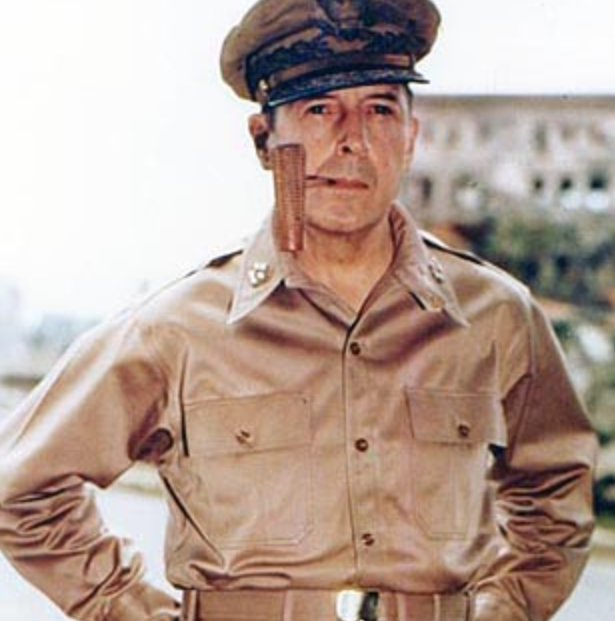This Is How Douglas MacArthur Dealt with Poor, Starving People

It was General Douglas MacArthur who said, "Old soldiers never die, they just fade away." But we should not let the General fade away just yet, because one of his most important orders can help us tackle today's refugee crisis.
The world is experiencing the most hungry and displaced children since MacArthur’s era during World War II.
One of them is Ahmed, a 12 year old refugee in Jordan. He and his family escaped the war in Syria, but not the enemy of hunger and poverty. Ahmed says, "I feel like I’m still a child and would love to go back to school, but my only option is to work hard to put food on the table for my family.”
Hunger has escalated dramatically among Syrian refugees, especially as funding has been reduced for the World Food Programme, the lead hunger relief agency.
Syrian parents are being forced to take their children out of school and send them to beg and work for food. In war-torn Iraq, Yemen, South Sudan and Central African Republic displaced children are also going hungry and missing out on education.
Enter Douglas MacArthur. When he was in Japan as the Supreme Commander of Allied Forces after World War II, there was also a tremendous hunger crisis. Children suffered most of all. School feeding programs had ceased to exist because of the war.
The very future of Japan was on the line. During a visit by food ambassador Herbert Hoover in 1946, plans were made to fight child hunger. Nutritional surveys were revealing severe deficiencies among the diet of children.
General MacArthur ordered an extensive child feeding program for Japan, including school meals. It would prove to be one of MacArthur's most important orders, even if it was lesser known.
By no means did it come easily. In fact, a U.S. report said things were so grim at the start of the occupation of Japan that getting food for a school lunch program seemed impossible. But old soldiers also persevere. In coordination with the Japanese government, the task of rebuilding school feeding was underway.
It started small. Food supplies were tough to come by. Only about 251,000 children were fed at the outset of the feeding program in 1946. But as more supplies and funding could be obtained school meals were eventually reaching close to seven million Japanese children.
The type of food varied depending on what was available locally in terms of fish, vegetables and other foods. The United State Department of Agriculture provided milk. Rural Japanese communities were also starting their own feeding programs to supplement the national effort.
Studies revealed weight gain among Japanese children participating in school feeding. Once a country on the brink of famine, Japan’s children were now eating and going to school.
The United States supported school feeding in Japan while at the same time starting its own national school lunch program at home. This help for Japan continued in subsequent years through the Food for Peace program, started by Dwight Eisenhower. .
If school feeding programs could be expanded today to areas in need like the Middle East, we could save millions of child war victims. The food would not only provide nourishment, but also get the children off the streets and back in class. Right now, children are desperate for food. Let's provide some for them at the schools.
Working with host governments, extensive school feeding for displaced children could be implemented. This would give the families the incentive to send their child to class.
The World Food Programme, Catholic Relief Services and other charities can help distribute the meals, expanding their current feeding programs. Catholic Relief Services, for example, has a small program providing hot lunches to Syrian refugee children in Lebanon. In partnership with Good Shepherd Sisters they are making a difference for hundreds of children. Let's expand on this to reach thousands or even millions more children.
Livelihoods support to refugee families, such as those provided by Save the Children inside Syria, must also accompany the school feeding.
It is clear that funding must be increased for humanitarian aid to the refugees. The world has to do more to respond to the greatest humanitarian disaster since WWII.
But if we listen to history, we know how to help those in need. Instead of children going hungry and being forced onto the streets, we could feed them. We could establish a foundation of peace through food and education as was done with MacArthur's school feeding in Japan.
MacArthur, with the help of Hoover, certainly knew what to do when confronted with a child hunger crisis. The result was millions of well-fed children. Today, Japan is a donor to hunger relief efforts around the globe.
Hoover wrote of MacArthur's evolution a statesman, "When he marched down their streets with his victorious army, the Japanese people turned their faces and spat at the walls, but when he marched the troops down the streets at his departure, they were in tears."